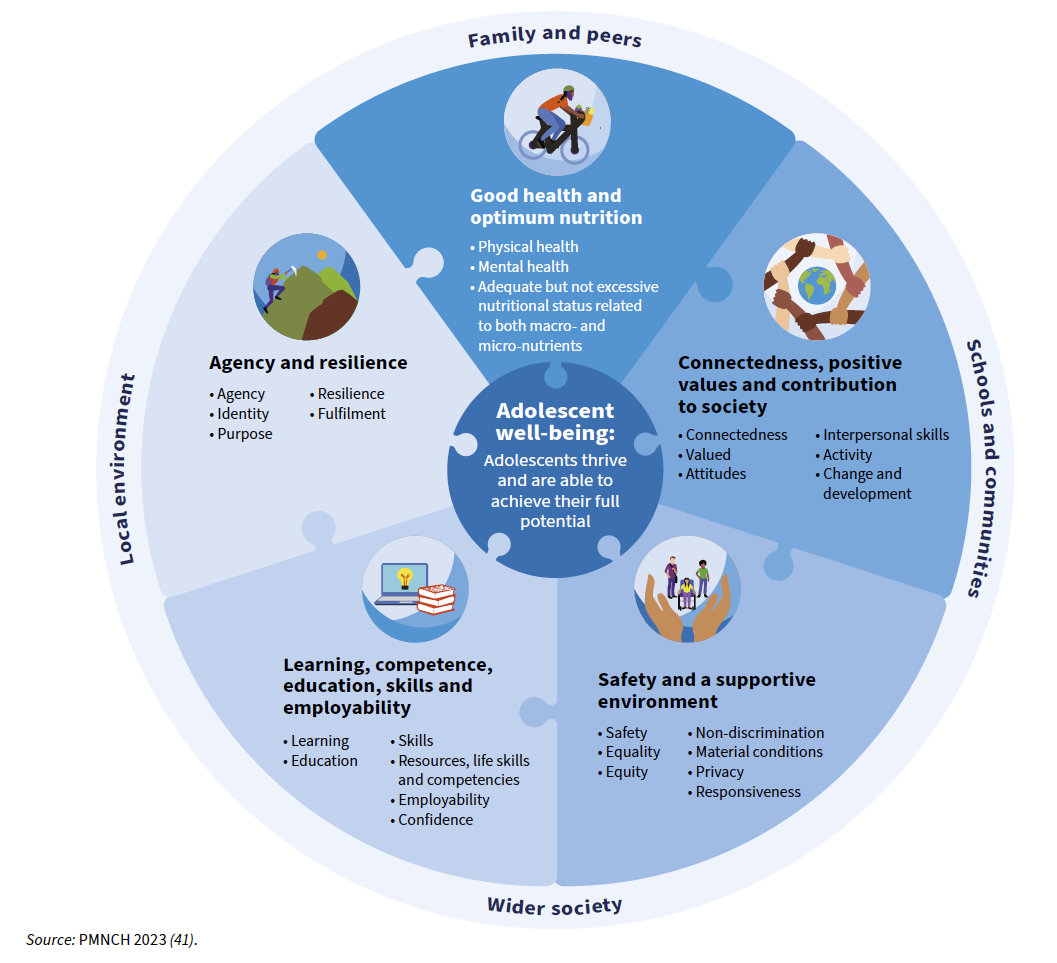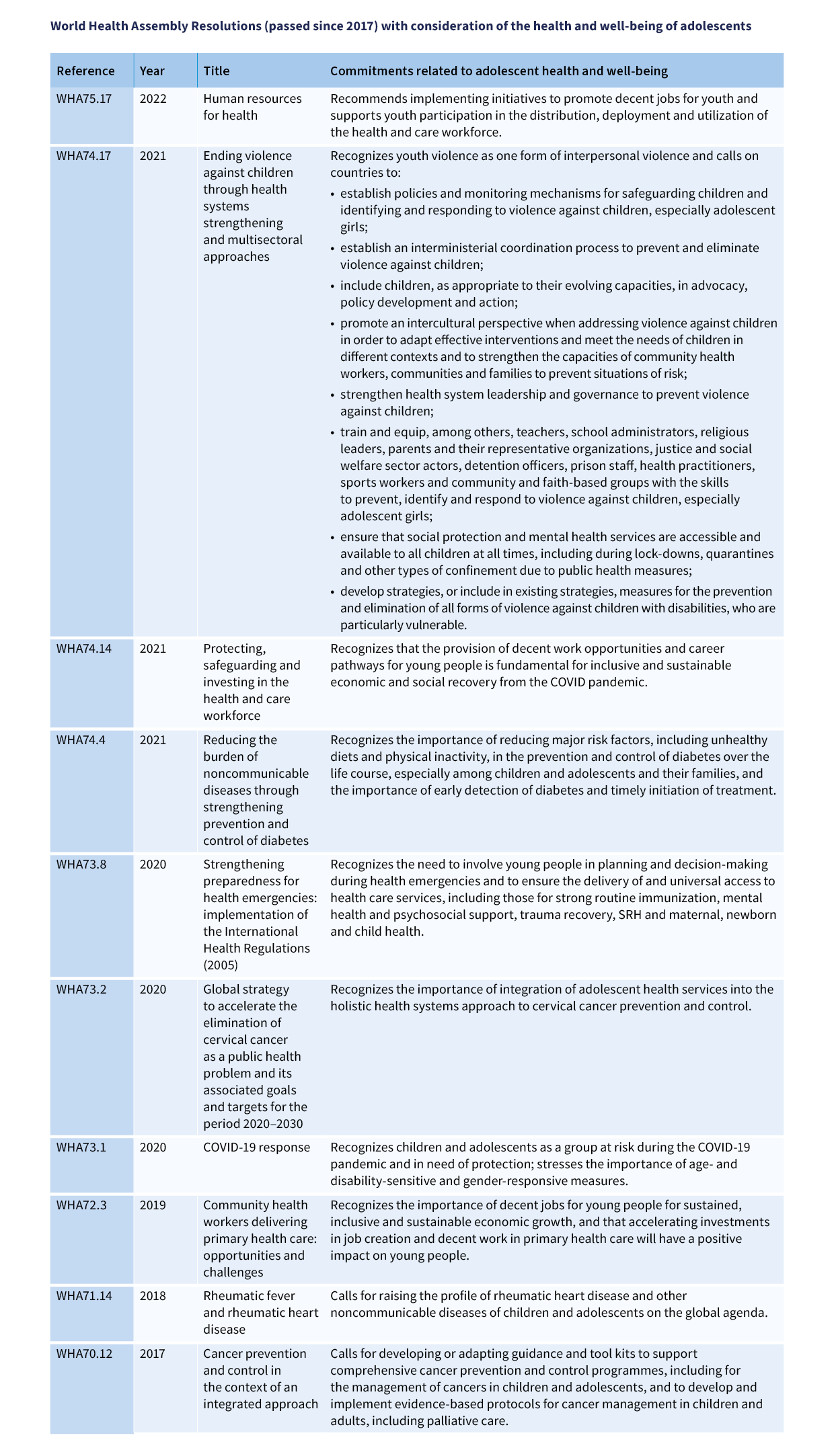
Advances have been made in promoting well-being as a positive vision of health.
The UN H6+ Technical Working Group on Adolescent Health and Well-being agreed that adolescent well-being is achieved when adolescents have the support, confidence and resources to thrive in contexts of secure and healthy relationships, realizing their full potential and rights. They proposed a definition and a consensus conceptual framework for adolescent well-being that consists of five interrelated domains.
Adolescents are the future leaders; it is very important to ensure that they are well groomed and have a good foundation. This includes making sure that issues of mental health are addressed, and adolescent development in general.
- Student (female), age 19–25, Botswana
The AA-HA! guidance was instrumental in accelerating action in regions and countries
Programmatic advances have been made by the he wide application of the AA-HA! guidance (first edition) that have demonstrated that:
- The AA-HA! systematic approach to plan programmes for adolescent health and well-being is suitable for countries with different contexts
- The AA-HA! approach to provide menus of interventions and implementation strategies that countries can choose from, rather than a core package of interventions and strategies for all countries, is highly acceptable.
- Although the AA-HA! guidance was aiming to support primarily national programming, its application for district-level planning in a number of countries has proved that the approach can be successfully applied for subnational-level planning.
- The application of AA-HA! in countries has facilitated the involvement of adolescents in decisions regarding national and subnational priorities.
- The emphasis that AA-HA! puts on intersectoral and multisectoral action has resulted in most countries involving sectors other than health in the process of national programming.
- Although the content of the guidance is dense, the level of detail is useful for practical application.
- The accompanying facilitators’ manual is a useful tool to enable country teams to steer the process of national priority setting and programming with little or no external assistance.




